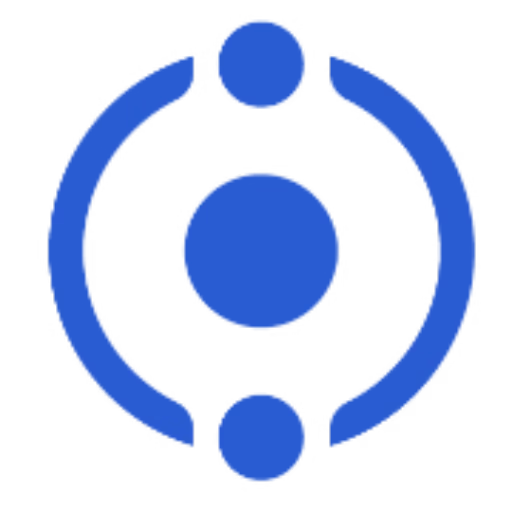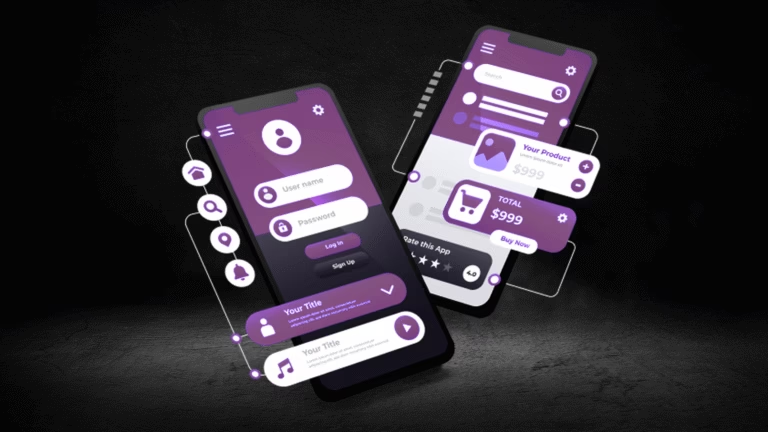
Introduction to University Website Modernization
In today’s digitally driven world, the importance of maintaining a robust and contemporary online presence for colleges and universities cannot be overstated. Modernizing university websites has become crucial in effectively communicating with current and prospective students, faculty, and other stakeholders. A user-friendly, responsive, and dynamic website not only enhances user experience but also reflects the institution’s dedication to embracing technological advancements and innovative practices.
Universities often face myriad challenges with outdated websites, which can hinder their ability to attract and retain students. Common issues include slow loading times, lack of mobile compatibility, and outdated content that fails to engage users. These shortcomings can result in frustrated visitors who may seek information elsewhere, ultimately impacting enrollment rates and the institution’s reputation. Moreover, as prospective students increasingly rely on the internet to research colleges, having a modern website is essential for making a strong first impression.
The need for website revamping has become more pressing as educational institutions aim to showcase their unique offerings in a competitive landscape. A modernized website empowers universities to effectively communicate their mission, values, and programs, while also providing essential resources such as admissions information, academic calendars, and event details. As user expectations evolve, high-quality, streamlined navigation, and responsive design are vital to meet the needs of a diverse audience. This is where Infotyke comes into play, offering expertise and support to help colleges and universities navigate the complexities of website revamping seamlessly.
Addressing these challenges through an effective modernization strategy allows educational institutions to enhance their online visibility and create a more engaging user experience. The crucial aspect is not merely updating aesthetics but ensuring that functionalities and design work synergistically to provide a comprehensive platform for interaction and information dissemination.
Identifying Key Goals for Website Modernization
In the increasingly competitive landscape of higher education, universities must focus on website revamping as a crucial strategy to enhance their online presence. The first step in this process involves identifying specific goals that align with the institution’s mission and vision. Improving user experience is a significant goal that can directly impact prospective students’ perceptions. A well-structured, intuitive, and visually appealing website can engage users, making navigation seamless and information easily accessible. This also influences the likelihood of converting visitors into applicants, therefore increasing enrollment rates.
Accessibility is another critical factor that universities must consider when modernizing their websites. Ensuring that the website is compliant with accessibility standards not only broadens the audience but also reflects the institution’s commitment to inclusivity. This can involve integrating features such as screen reader compatibility, keyboard navigation, and alternative text for images. By prioritizing accessibility, colleges can create a supportive environment for students and staff with disabilities, enhancing overall user satisfaction.
The integration of new technologies also plays a vital role in the modernization of university websites. Universities should aim to incorporate features such as chatbots for instant communication, interactive course catalogs, and virtual campus tours. These advancements not only enrich user experience but also create an engaging platform that may resonate well with tech-savvy prospective students. Furthermore, setting measurable outcomes for these goals enables universities to evaluate the effectiveness of their website revamping efforts. Metrics can include user engagement statistics, conversion rates, and feedback from user surveys, which can serve as indicators to calibrate their strategies moving forward.
Assessing Current Website Performance
Evaluating the performance of university websites is a critical step in the website revamping process. A systematic assessment enables institutions to identify their strengths, weaknesses, and areas for improvement, ultimately leading to the development of a more effective online presence. Various tools and metrics can be utilized to gather insightful data regarding site traffic, user engagement, and adherence to accessibility standards.
One of the primary tools in site performance analysis is Google Analytics, which offers comprehensive insights into the behavior of website visitors. By monitoring metrics such as page views, average session duration, and bounce rates, universities can gauge how well their current site captures the attention of prospective students and staff. A higher bounce rate may indicate content that fails to engage users, prompting a need for content enhancement or a more intuitive navigation structure.
Another crucial aspect to consider is user engagement, which can be evaluated through metrics like click-through rates, social media shares, and comments on blog posts or articles. These indicators not only reflect the interest of the audience but also highlight the potential effectiveness of existing content. By assessing user engagement, universities can better tailor their offerings and refine their website to meet the needs and expectations of their target demographic.
Furthermore, accessibility standards are a vital component of website performance. Using tools like WAVE or axe can help universities ensure their sites comply with WCAG (Web Content Accessibility Guidelines). Compliance with these guidelines is essential for maximizing reach and providing equal opportunities for all users, particularly those with disabilities. Identifying any gaps in accessibility features will inform subsequent design changes in the website revamping process.
In conclusion, assessing the current performance of a university website involves a multi-faceted approach that combines analytics, user engagement metrics, and accessibility standards. By leveraging these tools, institutions can foster an effective digital environment that aligns with contemporary expectations and enhances the online experience for all stakeholders.
Key Features of Modern University Websites
In the digital age, the expectations of users visiting university websites have evolved significantly. As institutions of higher education aim to connect with prospective students, alumni, and current learners, the layout, features, and functionalities of their websites must be comprehensive and user-centric. Modern university websites must incorporate several essential features, starting with mobile responsiveness. With numerous users accessing websites via smartphones and tablets, ensuring that these platforms adapt seamlessly to different screen sizes is paramount for enhancing user experience.
Intuitive navigation is another critical aspect that cannot be overlooked. A well-structured navigation system allows visitors to quickly locate information regarding programs, admissions, campus resources, and faculty. This ease of navigation directly impacts user satisfaction and may influence prospective students’ decisions. Additionally, personalization features that cater to individual user preferences can significantly elevate engagement levels, allowing institutions to provide tailored information and resources to different audience segments.
Integrating social media channels is increasingly important as well. Modern websites should facilitate connections to the university’s various social media platforms, promoting community interaction and engagement. Social media serves as an effective tool for universities to showcase their initiatives, events, and achievements while fostering a sense of belonging among current students and alumni.
A robust content management system (CMS) stands as the backbone of a dynamic university website. An effective CMS allows faculty and staff to easily create, update, and manage content, ensuring that website information remains current and relevant. With ever-evolving trends and technological advancements, universities are also increasingly adopting features like chatbots for real-time assistance and enhanced user interactions.
In summary, for universities seeking to modernize their online presence, focusing on mobile responsiveness, intuitive navigation, personalization, integrated social media, and a robust CMS is vital. By prioritizing these elements, institutions can ensure a website revamping that meets contemporary user expectations and enhances overall student engagement.
The Role of Infotyke in Website Modernization
As universities seek to enhance their online presence, the role of expert web design and development services becomes increasingly vital. Infotyke stands out as a leader in facilitating website revamping for educational institutions. Their profound expertise enables colleges and universities to tailor their digital platforms to meet the diverse needs of students, faculty, and prospective applicants. Infotyke’s approach integrates a strong understanding of university requirements with modern technological capabilities.
One of the key aspects of Infotyke’s service is project management. The team begins by conducting a thorough assessment of the existing website, identifying pain points, and setting clear objectives for the revamping project. This ensures that the modernization process is both effective and aligned with the institution’s strategic vision. Infotyke collaborates closely with university stakeholders to gather in-depth insights, which inform the development of customized solutions.
User testing plays a crucial role in the website modernization journey. Infotyke prioritizes feedback from real users, including students and faculty. This iterative process ensures that the final product is user-friendly and meets the expectations of the campus community. By implementing changes based on actual user experiences, Infotyke significantly enhances the usability and functionality of university websites, leading to higher engagement levels and satisfaction rates.
Furthermore, Infotyke provides continuous support during and after the website revamping process. Their dedicated team is available to address any technical issues and to offer guidance on future enhancements and updates. This ongoing partnership ensures that the websites remain relevant, secure, and effective tools for communication and information dissemination within the academic environment. By leveraging Infotyke’s expertise, colleges and universities can confidently navigate the complexities of website modernization and achieve professional, impactful results.
Choosing the Right Technology Stack
When it comes to website revamping for colleges and universities, selecting the right technology stack is imperative. The technology stack forms the backbone of a website, influencing its performance, maintainability, and scalability. Academic institutions must evaluate their specific requirements, available resources, and future growth when deciding on the appropriate technologies to implement.
Content Management Systems (CMS) are at the forefront of this decision. Popular CMS options like WordPress, Drupal, and Joomla provide user-friendly interfaces that allow for easy content updates and management without extensive coding knowledge. For universities focused on a custom solution, frameworks such as Laravel, Ruby on Rails, or Django are ideal. These frameworks are designed to provide robust features, allowing educators and administrators to create tailored functionalities that meet unique institutional needs.
Another critical consideration is the programming language. JavaScript and its frameworks (e.g., React, Angular) are crucial for modern web applications, enabling interactive and responsive user experiences. On the server side, languages like PHP and Python are commonly used for their versatility and support within various frameworks. Additionally, leveraging modern technologies often means integrating APIs that enhance website capabilities, such as analytics, payment gateways, and social media functionality.
Scalability is a key factor that universities should consider when selecting a technology stack. As institutions grow and their audience expands, the website must accommodate increased traffic and content without compromising performance. Furthermore, ease of use and ongoing support should also factor into the decision, ensuring that staff members without technical backgrounds can efficiently manage website content.
In conclusion, evaluating the right combination of CMS, frameworks, programming languages, and hosting solutions will enable colleges and universities to modernize their web presence effectively. Infotyke’s expertise in website revamping can guide educational institutions in making informed decisions that align with their strategic goals.
Ensuring Accessibility and Compliance
In the digital era, it is crucial for college and university websites to be accessible to all users, including those with disabilities. Accessibility not only enhances user experience but also ensures compliance with legal requirements such as the Web Content Accessibility Guidelines (WCAG). These guidelines were developed to promote a more inclusive web experience, addressing various disabilities including visual, auditory, physical, and cognitive impairments. Organizations such as colleges and universities must adhere to these standards to avoid potential legal ramifications and to foster an inclusive academic environment.
Compliance with accessibility standards encompasses several key aspects. The implementation of textual alternatives for non-text content, such as images and videos, is essential. This ensures that users who rely on screen readers can interpret visual materials effectively. Additionally, keyboard navigation must be seamless, allowing users who cannot use a mouse to access all content on the site. Color contrast and text enlargement are also significant; they aid individuals with visual impairments in navigating and understanding site content easily. Infotyke specializes in website revamping that prioritizes these essential accessibility features while also enhancing overall site functionality.
Moreover, universities need to conduct regular audits of their websites to assess compliance and identify areas needing improvement. Infotyke offers expertise in evaluating current platforms and implementing necessary changes to align with accessibility standards. They incorporate accessibility features, such as ARIA (Accessible Rich Internet Applications) attributes and auto-generated captions for multimedia, ensuring that the university websites are functional for all users. By collaborating with Infotyke, institutions can create a robust online presence that not only meets legal obligations but also reflects a commitment to diversity and inclusivity, enhancing the educational experience for every user.
Testing and Launching the New Website
Launching a revamped university website is a significant milestone, and ensuring it functions properly before going live is essential for a successful rollout. One of the first critical steps in the website revamping process is conducting thorough user testing. This involves gathering several stakeholders, including students, faculty, and IT staff, to interact with the new site interface. Their feedback is invaluable for identifying any navigation issues, content discrepancies, or usability challenges that may arise during real-world usage. Collecting qualitative feedback ensures that the website meets the needs of its diverse user base.
Alongside user testing, performance testing is another critical component. A university website must handle high traffic volumes, especially during key periods like registration or enrollment. Performance tests should evaluate site speed, load times, and responsiveness across various devices and browsers. Tools for performance testing can simulate traffic and provide insights into how well the site can manage concurrent users. This data allows for necessary adjustments to be made in advance, ensuring that the launch is smooth and meets user expectations.

Once testing is complete and adjustments made, the next phase is the launch itself. Best practices for launching the new website include developing a comprehensive communication strategy to inform students, faculty, and alumni of the new changes. Providing training sessions or webinars can help users acclimate to the new site features and design. Additionally, distributing detailed guides or FAQs can address potential concerns or questions that may arise post-launch. Following these steps will facilitate a seamless transition to the newly designed website and enhance the overall user experience within the academic community.
Ongoing Maintenance and Improvement
Once a university website has undergone the process of revamping through a specialized service like Infotyke, the journey does not conclude with the launch. Continuous maintenance and improvement are paramount to ensure that the site remains relevant, functional, and user-friendly. This perpetual approach helps institutions adapt to changing user needs and technological advancements, emphasizing the importance of regular updates in keeping the website current.
To effectively monitor website performance, universities should employ various analytics tools that track user engagement and behavior. By analyzing metrics such as page load times, bounce rates, and user session duration, administrators can pinpoint areas that require enhancements. Furthermore, implementing regular user surveys can provide direct feedback from students and faculty, allowing for a comprehensive understanding of their experiences and suggestions for improvements. Prioritizing feedback ensures that the website continues to serve its community optimally.
Another critical aspect of ongoing maintenance is ensuring website security. Regular updates to the website’s software and plugins protect it from vulnerabilities that could lead to data breaches. Implementing routine security audits and backups is essential for safeguarding sensitive information, thus fostering trust among users and encouraging them to engage with the website confidently.
Infotyke plays a significant role in this iterative process by offering continuous support and maintenance services tailored for colleges and universities. By partnering with Infotyke, institutions can leverage expertise in managing technical challenges, ensuring that the website not only functions effectively but also evolves with the changing needs of its user base. This collaborative effort leads to a sustained online presence that reflects the university’s commitment to excellence and innovation.








